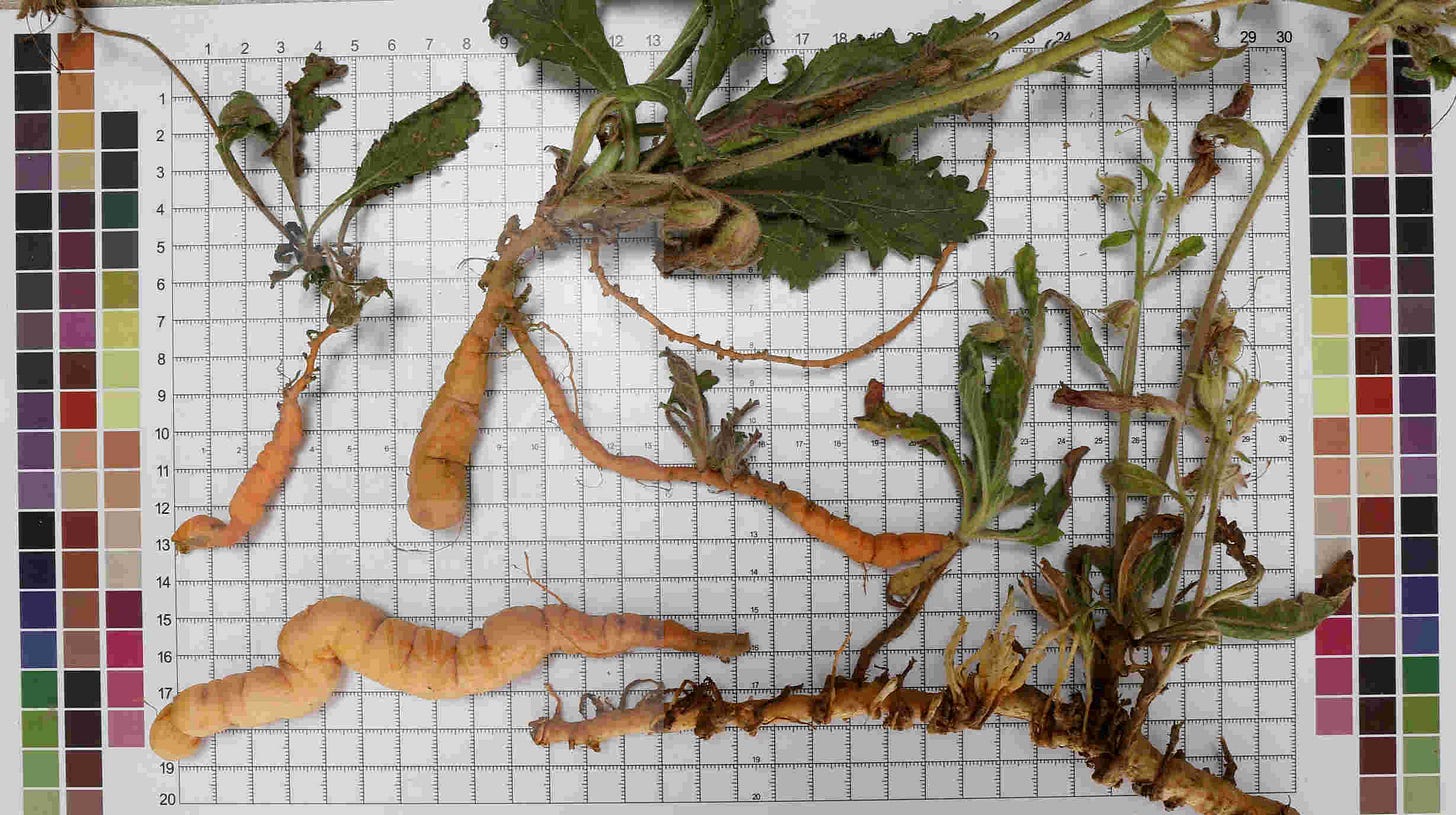Páozhì (炮製), which essentially translates as “herb processing,” a foundational tenet of Chinese medicine (CM), at once draws from the depths of ancient wisdom while constantly proving itself in both contemporary practice and scientific evaluation. This practice transcends time, transforming herbs, rendering them with enhanced or different nuanced therapeutic properties and ensuring safety. Essential to CM, páozhì encapsulates diverse techniques, each akin to a brushstroke on the canvas of herbal healing. From seemingly simple process of frying (炒 - chǎo) to the transformative power of steaming (蒸 - zhēng), these methods subtly metamorphose raw herbs, imbuing them with specific attributes, showcasing the essence of CM’s healing artistry.
Historical Echoes:
Páozhì has deep historical roots through ancient texts that span dynasties, preserving the intricate wisdom of herb processing. The first text dedicated to these practices was "Lei Gong’s Treaties on Processing Herbs" (雷公炮製論), penned in the 6th century, generations of herbalists have used this text as their guiding light for processing herbs. This seminal text, attributed to Lei Gong, a legendary figure in traditional Chinese medicine, meticulously outlines herb processing techniques, offering invaluable knowledge passed down through generations. During the 11th century, the Formulas of the Bureau of People's Welfare Pharmacy (太平惠民和劑局方) drew from this text and expanded to highlight many preparation techniques.
In modern times, páozhì remains a cornerstone of Chinese herbal medicine with research into both textual sources and laboratory research with the goal of understanding and, perhaps, furthering these techniques or developing new ones.
Páozhì Techniques:
Within Chinese medicine’s intricate weave of layers, páozhì encompasses techniques that span from harvest to the clinic, although it is primarily the final processing that most people are most familiar.
Here are some common techniques used in Chinese herb processing (páozhì):
1. Frying (炒 – chǎo): This method involves frying herbs in a pan without any liquid. It's commonly used to reduce the toxicity of certain herbs and to enhance their therapeutic properties. Frying can also improve the taste of bitter herbs.
2. Calcining (煅 – duàn): Calcining involves roasting herbs in a crucible at a high temperature until they turn into ash. This method is used to eliminate impurities, enhance potency, and reduce toxicity. Calcined herbs are often used in powdered formulations.
3. Steaming (蒸 – zhēng): Steaming herbs involves placing them in a steam chamber. This method is used to modify the properties of herbs, making them warmer or milder. Steaming can also enhance the herb's ability to supplement qi and blood.
4. Soaking (泡 – pào): Soaking herbs in various liquids, such as wine, vinegar, or honey, is used to modify the herb's properties. Soaking is often used to enhance the warming or cooling effects of herbs.
5. Sun-drying (晒 – shài): Herbs are dried under the sun to reduce moisture content. Sun-dried herbs are often used to enhance the herb's ability to supplement qi and blood, and they are commonly used in CM formulations.
6. Slicing (切片 – qiē piàn): Herbs are cut into specific shapes or sizes to facilitate their use in decoctions or herbal prescriptions. Slicing is a preparation technique used to ensure uniformity in herbal formulations.
7. Honey-Frying (蜜炙 – mì zhì): Some herbs are fried with honey, which enhances their tonifying properties and can make them more suitable for certain conditions.
It's important to note that different herbs require specific processing methods based on their inherent properties and intended therapeutic effects. The art of herb processing in CM is passed down through generations and, as a vital aspect of Chinese herbal medicine practice, many of these practices are relatively guarded.
Rehmannia glutinosa: A Case Study in Transformation
Rehmannia glutinosa (Gaertn.) DC., is a fundamental herb in CM, undergoes a critical transformation during processing. Raw Rehmannia (sheng dihuang生地黃) and processed Rehmannia (shu dihuang熟地黃) represent distinct medicinal forms, each with unique chemical profiles and therapeutic effects.
Raw Rehmannia (sheng dihuang), when harvested directly from the ground, contains high levels of iridoid glycosides, such as catalpol. Studies indicate its potential anti-inflammatory and anti-oxidative properties, making it valuable in addressing conditions related to inflammation and oxidative stress (Zhang et al., 2016).
In contrast, processed Rehmannia (shu dihuang), which involves steaming the raw herb, leads to the formation of new compounds, including catalpol derivatives and oligosaccharides. This process reduces the levels of catalpol and enhances the herb's immune-modulating and anti-fatigue properties, as observed in research conducted by Lee et al. (2009).
The distinct chemical compositions of raw and processed Rehmannia highlight the significance of traditional processing methods in modifying the herb's therapeutic potential, allowing practitioners to tailor treatments effectively based on the desired medicinal effects.
Final Reflections:
In the realm of páozhì, tradition dances harmoniously with innovation. Ancient texts, brimming with wisdom, resonate with contemporary practices, shaping the future of herbal medicine. The subtle alchemy of herb processing mirrors CM's essence, where herbs become potent healers, preserving ancient wisdom in the modern world. Páozhì embodies the art of healing, embracing the past while shaping the future of herbal medicine, a timeless practice in the tapestry of CM.
This article is, actually, a shameless advertisement for a talk I am doing on Saturday, November 4th (1 – 4pm ET). You can sign up for the class here, and, yes, it will be recorded.
Thanks for dropping by to read this. Stay in touch.
Warmly,
Thomas
References:
Lee, W., Ku, S., Kim, J., & Cho, I. (2009). Immune-Enhancing Effect of the Traditional Korean Medicine Herbal Complex, PM014, in Mice. Biological and Pharmaceutical Bulletin, 32(12), 2118-2124. https://doi.org/10.1248/bpb.32.2118
Zhang, Y., Liu, Z., & Zhou, T. (2016). Effects of Catalpol on Expression of TLR4, NF-κB, and MCP-1 in Rats with Diabetic Nephropathy. Acta Medica Mediterranea, 32, 755-760.





